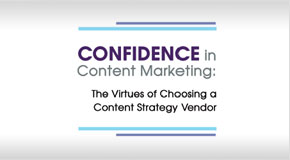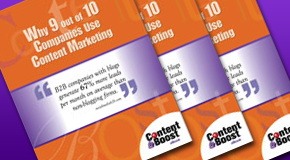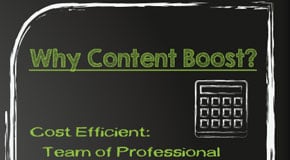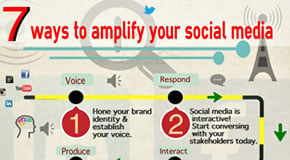The sales game has fundamentally changed, thanks in large part to the Internet. Today’s buyers are smarter, sharper and more independent than ever before. They perform thorough research and carefully weigh their options before making a purchase decision. In fact, the majority of buyers consume two to five content assets before they are ready to make a purchase, according to Eccolo Media’s “2015 B2B Technology Content Survey Report.”
To survive in this new world—in which buyers now have control over the sales process—salespeople have had to re-evaluate and readjust their approach to sales as they can no longer rely on their old tactics. Instead, they must take on more of an advisory role, educating buyers on ways their products and services can grow their businesses, which is exactly where content marketing comes into play.
Chances are your marketing team is already using custom content to drive traffic to your site and increase leads. However, if your team is only creating content that focuses on top-of-the-funnel interactions—such as brand awareness and consumer engagement—then you’re likely missing out on ways to convert buyers.

By developing compelling content that speaks directly to your buyers’ pain points and challenges, you can educate prospects, answer common questions, and overcome objections they may have throughout the buying process. Below are three types of content that are most advantageous in closing deals:
1.Product brochures/data sheets: According to the report mentioned above, 39 percent of survey respondents found product brochures and data sheets most influential in their purchasing decisions. When creating a compelling product brochure/data sheet, make sure you’re providing more than just a snapshot of the product’s features. It’s important that you’re emphasizing the product’s benefits and how they can curb your customers’ key pains and drivers.
2.White papers: White papers are a powerful selling tool as they help buyers understand what your company does and allow you to display your thought leadership and expertise in your field. In fact, white papers came in second to product brochures as most influential, according to the report. Besides being an educational resource, white papers can be repurposed in a variety of ways; for example, they can be used to rejuvenate old blogs.
3.Case studies: Case studies also topped the list as one of the most influential content assets, with 31 percent of survey respondents claiming that they’ve helped them make a purchasing decision. Case studies are effective because they tell stories about how your product or service helped a real customer solve his or her problem, giving your business third-party validation. Also, when a customer has a specific problem, sales can provide them with a case study that most closely resembles his or her situation.
Content marketing isn’t just for generating leads and consumer interest; it can also be used throughout the sales process to educate prospects and influence purchasing decisions. To learn more about content as a sales enabler, check out the Content Boost blog.
Edited by
Brooke Neuman















